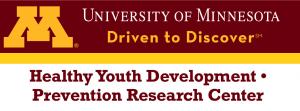What is an evidence-based intervention (also known as evidence-based program) anyway? You may know the definition—a specific kind of programming that has been evaluated to show behavior change—but what does that really mean? Evidence-based interventions and programs can expand or strengthen the programming you deliver in your community. Explore what evidence-based interventions are, what makes them different from other kinds of programs, and learn some of the basics for using evidence-based interventions effectively. Complete this course at your own pace.
Training Hub
The Sex Education Collaborative Training Hub lists trainings for sex educators, facilitators, and other professionals on best practices for sharing important information with clients and the public. From teaching anatomy inclusively to effectively addressing bias in the classroom to addressing racial justice and equity in sex education, the Training Hub includes trainings, technical assistance, and policy support from state, regional, and national leaders in the field of sex education.
Please note: The Training Hub includes both in-person and online professional trainings. If you see a training you are interested in and it isn’t listed as virtual, please reach out directly to any of our members to find out what's possible!
Trainings Offered by State-Based and National Organizations
Displaying results 111 - 115 of 172Evidence-Based Interventions
- Indicator 1 (K-12): Describe three health (e.g. physical, social and/or emotional) and/or academic benefits of sex education for young people
How to Talk About Dual Protection
Designed for educators and clinicians, this eLearning gives participants the information and skills they need to address the increasing rates of STIs, whether working in the classroom or clinic. In this training, you will practice communicating with people who are resistant to using dual protection by using real-life scenarios tailored to your profession. Walk away feeling ready to explain dual protection and confident communicating about the barriers young people are experiencing.
- Indicator 2 (6-12): Demonstrate the steps necessary for effective external and internal condom use and how to access condoms. (S)
- Indicator 4 (6-12): Explain methods of contraception, including the latest medical advances that are popular among young people.
- Indicator 5 (6-12): Demonstrate the steps necessary for effective external and internal condom use and how to access condoms. (S).
- Indicator 7 (6-12): Identify three medically accurate and youth-friendly resources for STD/STI and HIV prevention, testing, and treatment
Addressing the Needs of LGBTQ Youth
The ability to provide services for lesbian, gay, bisexual, transgender and queer or questioning (LGBTQ+) youth begins with an understanding of the nature of gender and sexual orientation, correct terminology, basic knowledge of the “typical” experiences of the population, and an awareness of the increased risk factors experienced by these youth. In this workshop, participants will have an opportunity to explore this important content and identify strategies for providing welcoming and affirming services appropriate for LGBTQ+ youth. The facilitator will share an overview of the theory, current issues, and research-based strategies important when working with LGBTQ+ populations. Participants will then begin to identify practices that support effective service design and delivery and will lead to the most inclusive and impactful practices. Participants also strategize ways to incorporate these practices into their services and settings.
Objectives of this course:
- Examine the key theories and terminology around gender identity/expression and sexual orientation.
- Define the stages of “coming out,” i.e. self-awareness and identity disclosure.
- Identify increased risk factors for LGBTQ+ youth.
- Strategize effective ways to work with and support LGBTQ+ youth.
- Identify resources for LGBTQ+ youth.
- Develop a personal plan of action for positively addressing the needs of LGBTQ+ youth.
Visit ETR's Training & TA Form to submit your request and receive cost information.
- Indicator 1 (K-12): Demonstrate three techniques to create an inclusive and affirming learning environment. (S)
- Indicator 1 (K-12): Explain how availability of supportive school staff, presence of Gay-Straight Alliances (GSAs), LGBQ-inclusive curricular resources, and the presence of comprehensive, enumerated anti-harassment school policies are related to improved school climate for students of all sexual orientations.
- Indicator 4 (K-12): Demonstrate the use of inclusive and affirming language. (S)
- Indicator 5 (K-12): Demonstrate the ability to intervene effectively in homophobic and other bullying comments and actions. (S)
- Indicator 6 (K-12): Explain three ways that LGBQ+ youth are at disproportionate risk for health disparities.
- Indicator 8 (K-12): Explain why it is essential to include positive portrayals of LGBQ+ people in lessons.
- Indicator 9 (K-12): Demonstrate three strategies that can be used to include positive portrayals of LGBQ+ people in lessons. (S)
- Indicator 1 (K-12): Explain how availability of supportive school staff, presence of Gay-Straight Alliances (GSAs), gender-inclusive curricular resources, and the presence of comprehensive enumerated anti-harassment school policies are related to improved school climate for students of all gender identities.
- Indicator 2 (K-12): Demonstrate the use of inclusive and affirming language. (S)
- Indicator 5 (K-12): Demonstrate the ability to intervene effectively in transphobic, sexist, misogynistic and other gender-related bullying comments and actions. (S)
Virtual PD - Tailoring Lessons to Meet Age and Developmental Levels
Virtual Professional Development is a simulated classroom where teachers can practice teaching student avatars using short scenarios and support from an instructional coach, so they can quickly learn and master the skills they most need to be effective. With upper elementary, middle and high school classrooms, Virtual PD has scenarios for teachers of all grade levels across a wide range of topics aligned with the Professional Learning Standards for Sex Education (PLSSE). You can watch the video here (link is external) to learn more about Virtual PD.
Using the Virtual Professional Development classroom simulator, the educator will practice Tailoring Lessons to Meet Age and Developmental Levels with the student avatars. In this scenario, the educator has recently noticed an increase in inappropriate touching happening in the hallways at school. So the participant decides to address this issue through a lesson on personal boundaries with their students. The participant will read various situations aloud asking students whether these situations would violate their personal boundaries or not. The participant will need to demonstrate the ability to analyze and tailor lesson plans to match the age and developmental stages of their students.
- Indicator 7 (K-12): Demonstrate the ability to analyze and tailor lesson plans to match the age, developmental stages, cultural backgrounds, and other identities of students. (S)
Addressing Trafficking in School
In this eLearning unit, learn how, as an educator or school employee, you can identify signs that a student may be experiencing or vulnerable to sex or labor trafficking. This unit employs stories, interactive dialog, quizzing, and video to promote learning. Suggested prerequisite: Human Trafficking 101.
Through Healthy Teen Network’s partnership with the University of Maryland School of Social Work’s Prevention of Adolescent Risk Initiative, we are pleased to share resources on human trafficking. Although these resources are focused on specifics for the state of Maryland, anyone from any state can learn about human trafficking as well.
- Indicator 1 (K-12): Describe three distinguishing characteristics between healthy and unhealthy relationships, involving family, friends, and/or romantic partners.
- Indicator 6 (K-12): Explain three ways that LGBQ+ youth are at disproportionate risk for health disparities.
- Indicator 7 (K-12): Identify three credible, medically accurate, youth-friendly resources that can provide information or support related to sexual orientation.
- Indicator 8 (K-12): Explain why it is essential to include positive portrayals of LGBQ+ people in lessons.
- Indicator 9 (K-12): Demonstrate three strategies that can be used to include positive portrayals of LGBQ+ people in lessons. (S)
- Indicator 6 (K-12): Explain three ways that transgender and gender expansive youth are at disproportionate risk for health disparities.
- Indicator 7 (K-12): Identify three credible, medically accurate, youth-friendly resources that can provide information or support related to transgender and gender expansive people.
- Indicator 8 (K-12): Explain why it is essential to include positive portrayals of transgender and gender expansive people in lessons.
- Indicator 9 (K-12): Demonstrate three strategies that can be used to make lessons affirming for transgender and gender expansive people. (S)
Additional Trainings offered by out-of-state organizations
- 1 of 70
- next ›
Our experienced trainers help youth-serving adults build their capacity to support adolescents’ healthy youth development and sexual health. We offer evidence-based, fun, interactive adolescent health education and professional development on a range of topics: whether you choose an in-person, full-day course or build your own virtual training event from our flexible menu, we can help make “best practice” your team or agency’s regular practice.



